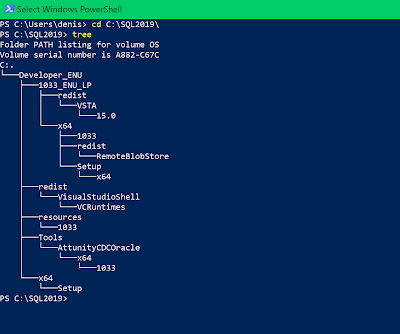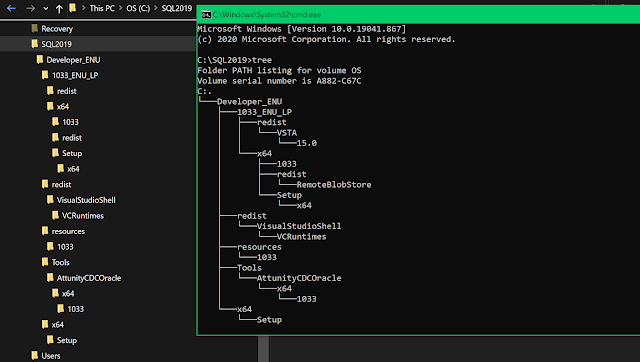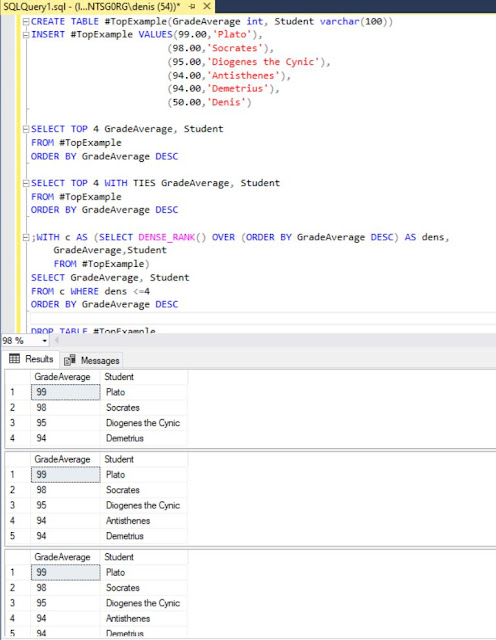So how does an index work?
In SQL Server, indexes are organized as B-trees. Each page in an index B-tree is called an index node. The top node of the B-tree is called the root node. The bottom level of nodes in the index is called the leaf nodes. Any index levels between the root and the leaf nodes are collectively known as intermediate levels. In a clustered index, the leaf nodes contain the data pages of the underlying table. The root and intermediate level nodes contain index pages holding index rows. Each index row contains a key value and a pointer to either an intermediate level page in the B-tree, or a data row in the leaf level of the index. The pages in each level of the index are linked in a doubly-linked list.
Nonclustered indexes have the same B-tree structure as clustered indexes, except for the following significant differences:
Nonclustered indexes can be defined on a table or view with a clustered index or a heap. Each index row in the nonclustered index contains the nonclustered key value and a row locator. This locator points to the data row in the clustered index or heap having the key value.
- The data rows of the underlying table are not sorted and stored in order based on their nonclustered keys.
- The leaf layer of a nonclustered index is made up of index pages instead of data pages.
The row locators in nonclustered index rows are either a pointer to a row or are a clustered index key for a row, as described in the following:
- If the table is a heap, which means it does not have a clustered index, the row locator is a pointer to the row. The pointer is built from the file identifier (ID), page number, and number of the row on the page. The whole pointer is known as a Row ID (RID).
- If the table has a clustered index, or the index is on an indexed view, the row locator is the clustered index key for the row. If the clustered index is not a unique index, SQL Server makes any duplicate keys unique by adding an internally generated value called a uniqueifier. This four-byte value is not visible to users. It is only added when required to make the clustered key unique for use in nonclustered indexes. SQL Server retrieves the data row by searching the clustered index using the clustered index key stored in the leaf row of the nonclustered index.
Keep your clustered indexes narrow
CREATE TABLE Test1(id int, somecol char(36), somecol2 char(36))
GO
INSERT Test1
SELECT number,newid(),newid()
FROM master..spt_values
WHERE type = 'P'
CREATE CLUSTERED INDEX cx on Test1(id)
CREATE NONCLUSTERED INDEX ix1 on Test1(somecol)
CREATE NONCLUSTERED INDEX ix2 on Test1(somecol2)
SELECT
DB_NAME(DATABASE_ID) AS [DatabaseName],
OBJECT_NAME(OBJECT_ID) AS TableName,
SI.NAME AS IndexName,
INDEX_TYPE_DESC AS IndexType,
PAGE_COUNT AS PageCounts
FROM sys.dm_db_index_physical_stats (DB_ID(), NULL, NULL , NULL, N'LIMITED') DPS
INNER JOIN sysindexes SI
ON DPS.OBJECT_ID = SI.ID AND DPS.INDEX_ID = SI.INDID
AND OBJECT_NAME(OBJECT_ID) = 'Test1'
GO
DatabaseName TableName IndexName IndexType PageCounts tempdb Test1 cx CLUSTERED INDEX 22 tempdb Test1 ix1 NONCLUSTERED INDEX 12 tempdb Test1 ix2 NONCLUSTERED INDEX 12
EXEC sp_spaceused 'Test1'
name rows reserved data index_size unused Test1 2048 472 KB 176 KB 240 KB 56 KB
CREATE CLUSTERED INDEX cx on Test1(id,somecol,somecol2)
WITH DROP_EXISTING
SELECT
DB_NAME(DATABASE_ID) AS [DatabaseName],
OBJECT_NAME(OBJECT_ID) AS TableName,
SI.NAME AS IndexName,
INDEX_TYPE_DESC AS IndexType,
PAGE_COUNT AS PageCounts
FROM sys.dm_db_index_physical_stats (DB_ID(), NULL, NULL , NULL, N'LIMITED') DPS
INNER JOIN sysindexes SI
ON DPS.OBJECT_ID = SI.ID AND DPS.INDEX_ID = SI.INDID
AND OBJECT_NAME(OBJECT_ID) = 'Test1'
GO
DatabaseName TableName IndexName IndexType PageCounts tempdb Test1 cx CLUSTERED INDEX 22 tempdb Test1 ix1 NONCLUSTERED INDEX 21 tempdb Test1 ix2 NONCLUSTERED INDEX 21
EXEC sp_spaceused 'Test1'
name rows reserved data index_size unused Test1 2048 600 KB 176 KB 384 KB 40 KB
SET SHOWPLAN_TEXT ON
GO
SELECT count(*) FROM Test1
GO
SET SHOWPLAN_TEXT OFF
GO
|--Compute Scalar(DEFINE:([Expr1004]=CONVERT_IMPLICIT(int,[Expr1005],0)))
|--Stream Aggregate(DEFINE:([Expr1005]=Count(*)))
|--Index Scan(OBJECT:([ReportServer].[dbo].[Test1].[ix2]))
Indexes with Included Columns
Filtered Indexes
Is an index seek always better or faster than an index scan?
Finding Fragmentation Of An Index And Fixing It
How to get the selectivity of an index
Adding nonclustered index on primary keys
Index Seek on LOB Columns
Row Overflow Pages - Index Tuning
Columnstore Index Basics
Columnstore Index – Index Statistics








